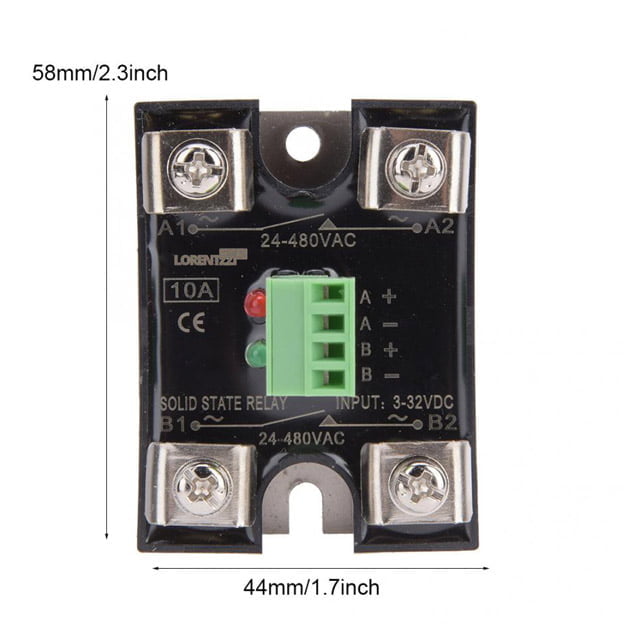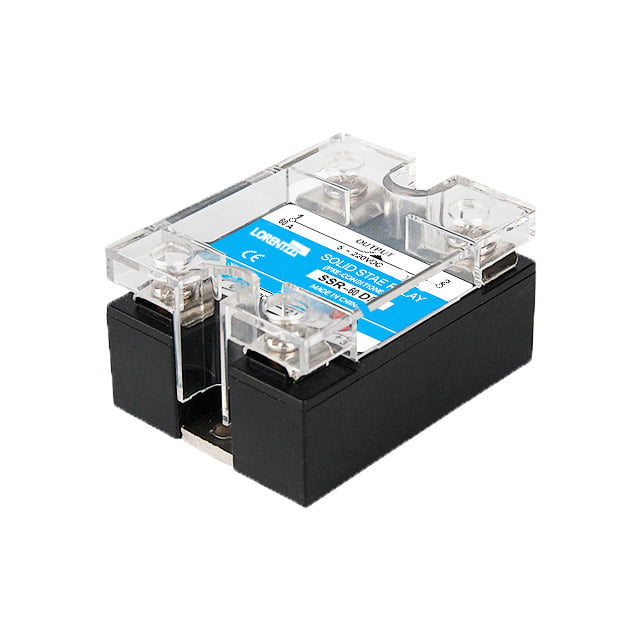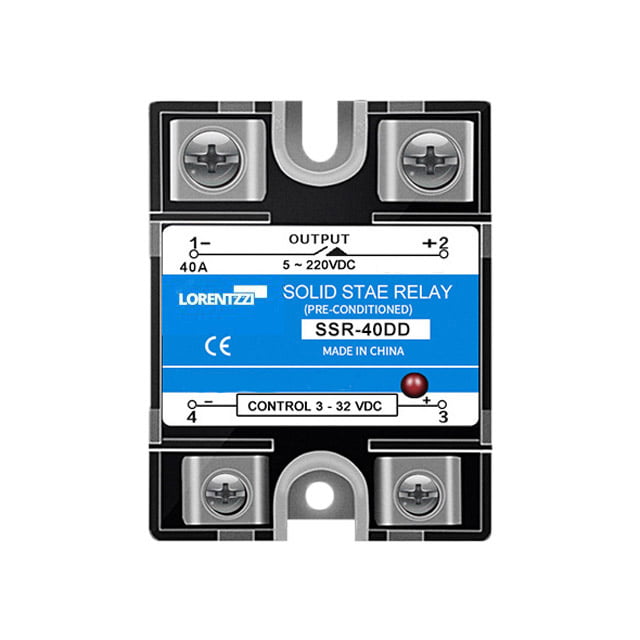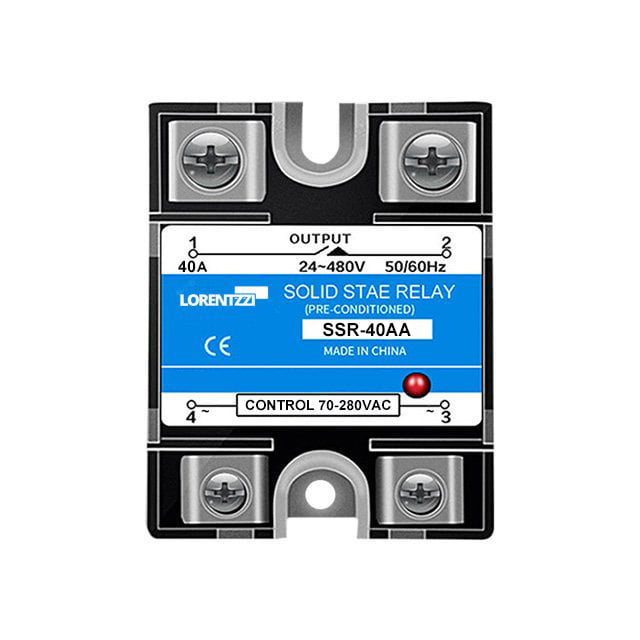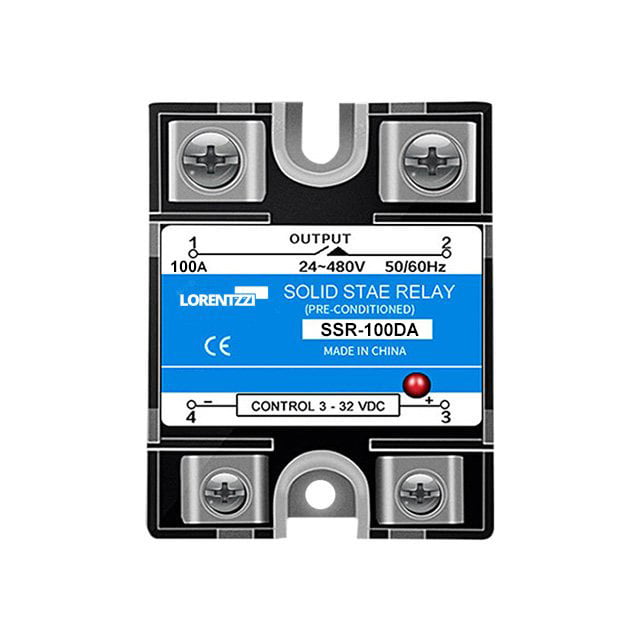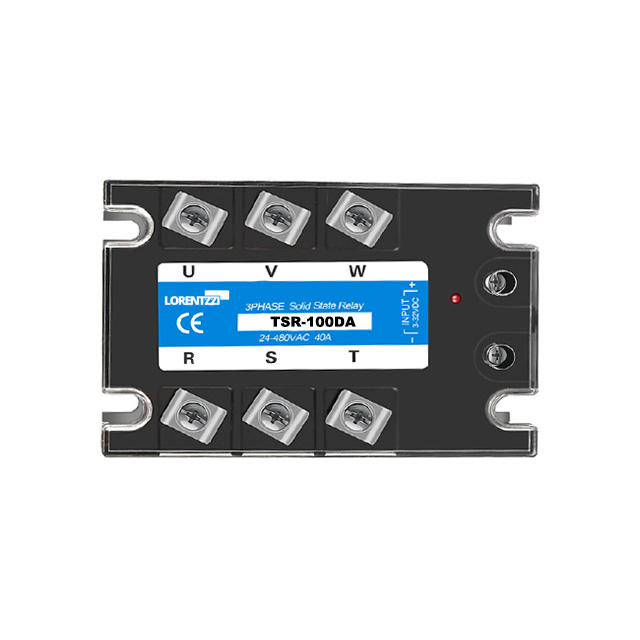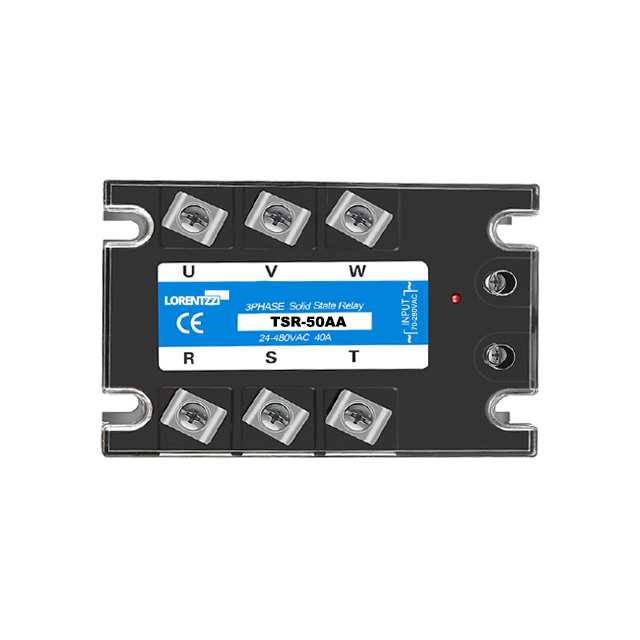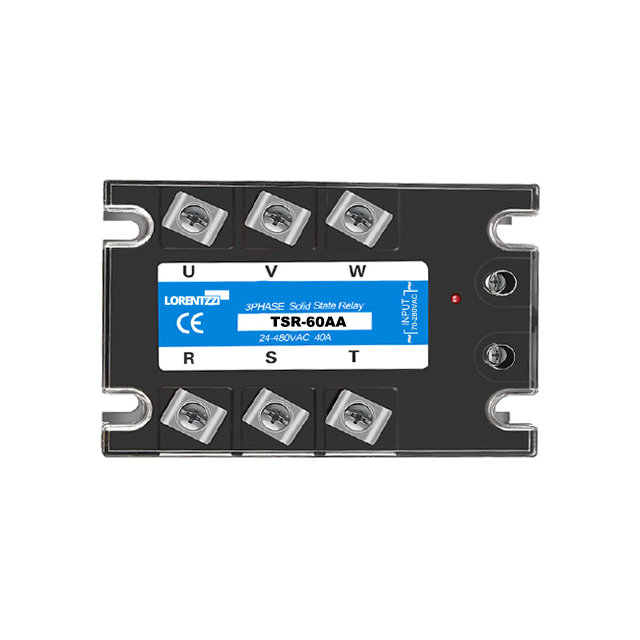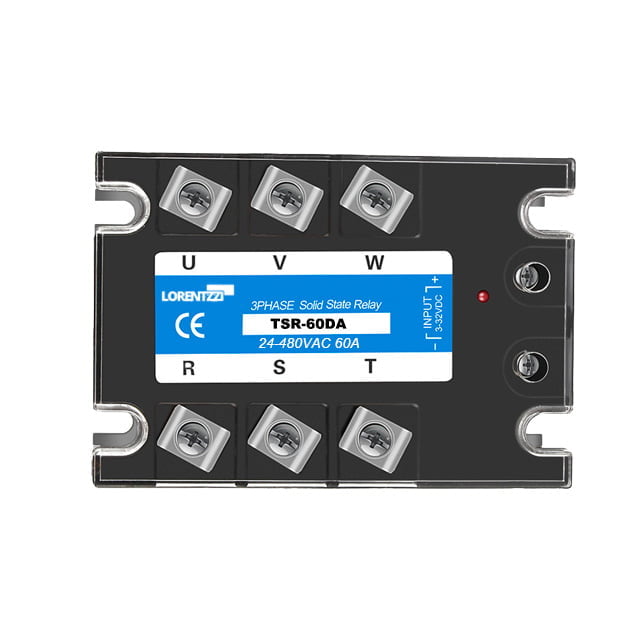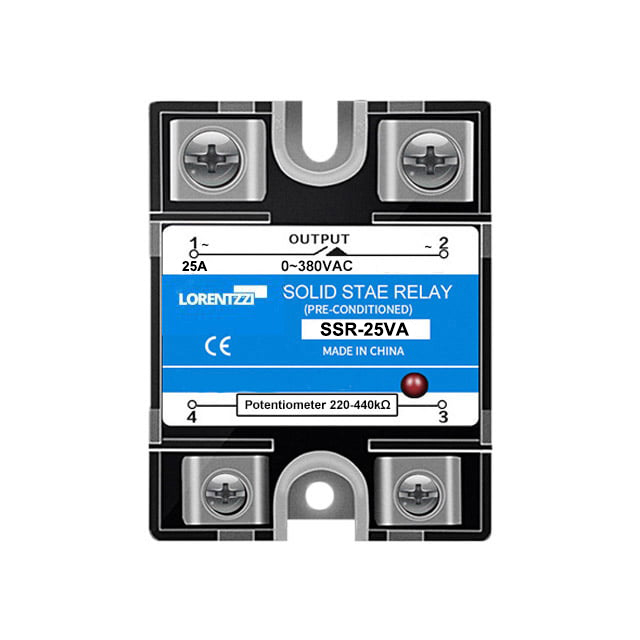Solid State Relays
- China leading solid state relay manufacturer
- Low MOQ, factory direct sale
- Zero crossing SSR and random turn on SSR available
- Two years long warranty time
Single phase solid state relay
Lorentzzi® has produced the single phase solid state relays(SSR) for many years, and has a very professional and rich experience in solid state relay manufacturing and quality control.
Our single phase SSRs include panel mount DC AC SSRs, AC AC SSRs, DC DC SSRs, DIN rail solid state relays. Load current is from 10 amps to 120 amps
All the SSRs are manufactured with strict CE, RoHS, ISO9001, FCC standars.
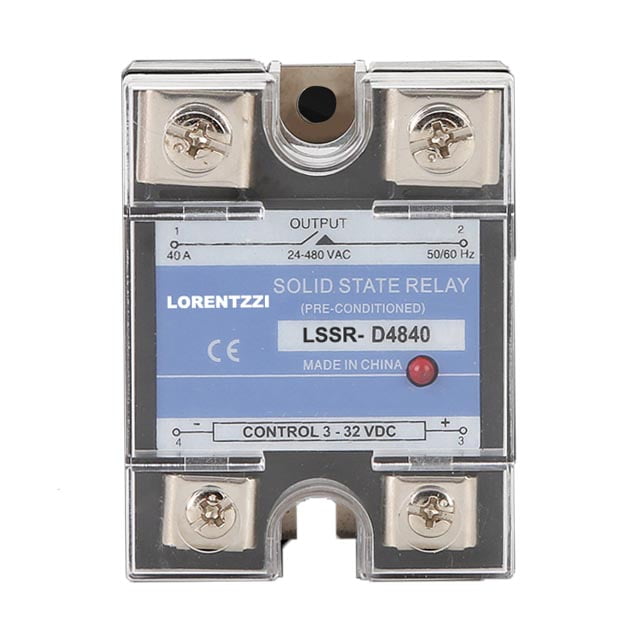
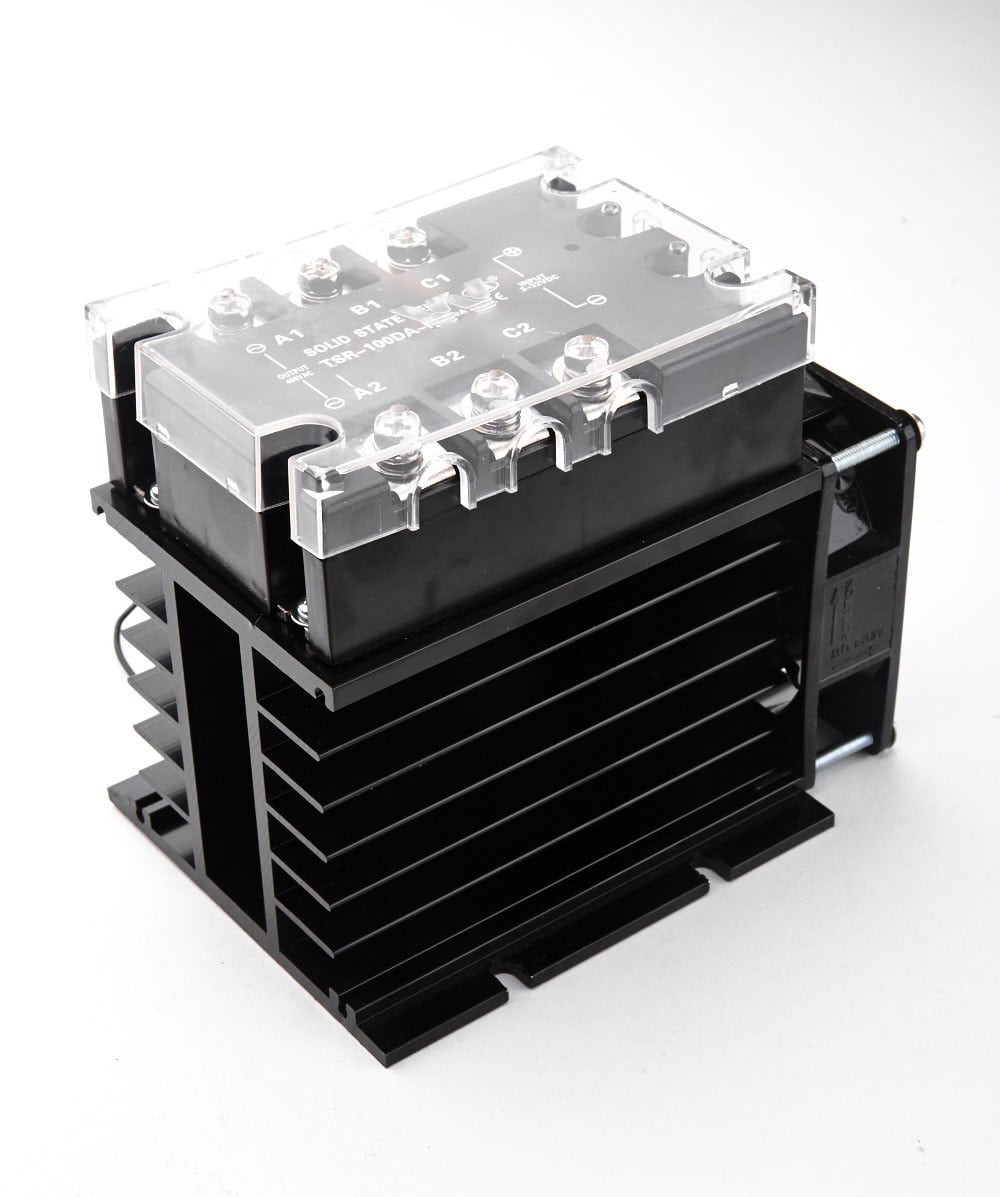
3 phase solid state relay
As one of leading solid state manufacturers in China, we, Lorentzzi®, produce both DC to AC 3 phase solid state relays and AC to AC 3 phase solid state relays with superb quality. The 3 phase SSR uses a DC3-32V or AC70-280V to switch on or off a 220VAC or 380VAC three phase heavy load, the maximum load current we can produce is 200 amps.
And when choosing a SSR, please consider using a heat sink to cool down the SSR, as it will generate much heat during operation.
Solid state voltage regulator
The solid state voltage regulator is also named SSVR, voltage power regulator. It uses a phase-shift control method to adjust the output voltage linearly from 0V to voltage applied on the load side. It is widely used in temperature control systems or LED lighting dimming control systems, the control signal can be analog 0-5VDC, 4-20mA or manual potentiometer. Lorentzzi can produce both single phase voltage regulator and 3 phase voltage regulator.
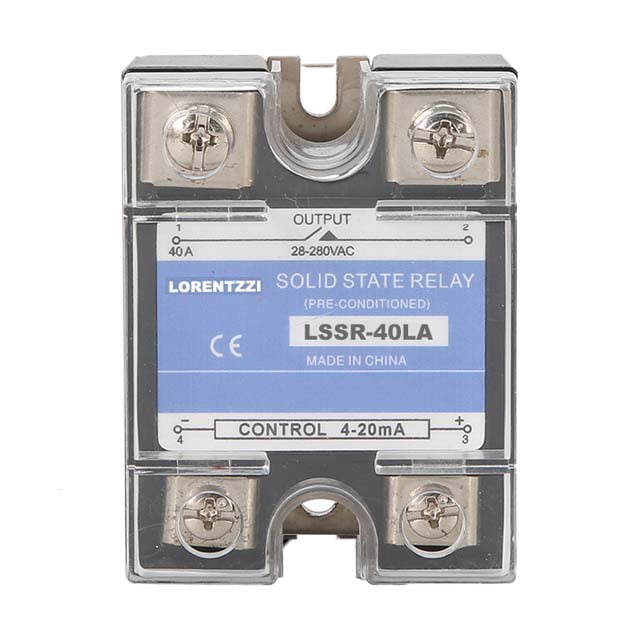
Products
-
Dual input and dual output, DC control AC type, Load...
-
DIN rail mounting, compliant with IEC60715, Radiator pre-installed, Current range...
-
Load current: 100A, Control Voltage: 3-32VDC, Load Voltage: 5-220VDC, Clear...
-
Specifically designed for single-phase DC heaters, Maximum load current: 60A,...
-
Specifically designed for single-phase DC loads, Load current: 25A, Control...
-
Single phase DC control DC solid state relay, Maximum load...
-
Specifically designed for single-phase DC loads, Load current: 40A, Control...
-
Suitable for single-phase AC loads, Control voltage: 70-280VAC, load voltage:...
-
Suitable for single-phase AC loads, Control voltage: 70-280VAC, load voltage:...
-
Built-in RC absorption circuit, With LED running status indicator light,...
-
Built-in RC absorption circuit, With LED running status indicator light,...
-
Single phase DC to AC solid state relay, Control voltage...
-
For single phase load, Specially designed for heating application, DC...
-
Compact and easy to use, DC controlled AC solid state...
-
Reliable product quality, Single phase DC controlled AC solid state...
-
RC snubber circuit inbuilt, reducing noise, Maximum 100 amps load...
-
Type: AC to AC SSR,C Control voltage: 70-280VAC, load voltage:...
-
Type: AC to AC SSR,C Control voltage: 70-280VAC, load voltage:...
-
Three-phase DC controlled AC solid state relay, Control voltage DC3-32V,...
-
RC snubber circuit inbuilt, reducing noise, Plastic cover ensure safer...
-
Manual control solid state voltage regulator Maximum load current 10...
-
Manual control solid state voltage regulator Maximum load current 25...
-
Analog 4-20mA control Output voltage 0-380VAC adjustable, 2 years warranty,...
-
1.Analog 4-20mA, 0-10VDC input, 2.Various output currents available, maximum load...
-
Single phase potentiometer control SSVR, Maximum load current 40A, Specially...
solid state relay advantages
Fast response
The solid state relay switching speed is very fast, only 1ms, so it can control the load closing and breaking very quickly and precisely.
No noise
During the switching on/off operations, no noise will be generated, so the operation will be very silent.
No spark
Because it uses a light signal to switch on/off a load, no spark generated, safe to use in flammable and explosive places.
Solid state relay applications

Lighting Control
In the lighting control application, the SSR is used as a switch, a stage always needs a silent environment, so the SSR no noise functions just meet this requirement.
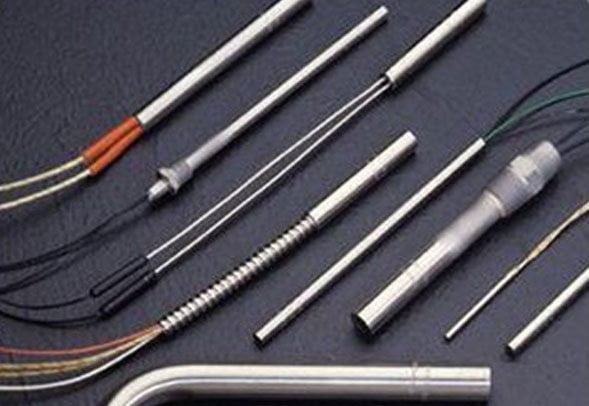
Solid state relay heater control
The heating elements are always controlled by a temperature controller, if the temperature controller output is SSR, a SSR will be this execution unit.

Kiln Temperature Control
Kiln systems always need fast and precise temperature control, a solid state relay just has this advantage, so we can often see SSRs in a kiln system.

Automated Industry
In the automation industry, we always use PLC to control various parts, and a SSR is the best execution unit to operate various parts.
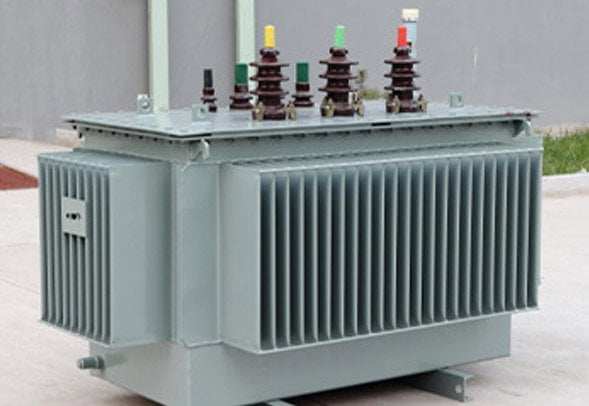
Transformer Control
Turning on a transformer control needs a very big current, it is very dangerous. By using a DC AC SSR, we can avoid this danger.

Solid State Relays for Motor Control
We can easily find a SSR in a motor control system, therefore, a suitable SSR is very vital, please contact us for a perfect instruction.

The Complete Guide To A Solid State Relay
52 years have passed since the first solid state relay facing the world. Now we can see the booming usage of SSR, because of it, we have engaged ourselves into the SSR manufacturing. Lorentzzi can produce and supply all kinds of different SSRs
Table of Contents
What is a Solid State Relay?
A solid state relay abbreviation is SSR, it uses the first letter of words of “Solid State Relay” to name. A solid state relay is a no contact parts switch, compared with a common switch, it uses a semiconductor like optocoupler, Mosfet and so on to turn on or off a heavy load. The first solid state relay was innovated by Crydom in the year of 1971, till now(2023), the time has passed 52 years.
How SSRs Differ from Traditional Relays
If we disassemble a traditional relay such as an AC contactor, intermediate relay, limit switch or pushing button, we can find it uses a moving contact to open or close a circuit, this contact is always made of silver alloy material or copper alloy material. This characteristic determines that as the use time and number increase, the contacts will wear out and the circuit cannot be switched normally. A SSR innovation is just to solve this problem. Another advantage is a SSR will not generate sparks, this characteristic makes it perfect to use in the chemical industry, coal mine and other occasions requiring explosion-proof, moisture-proof and anti-corrosion.
The working principle of sSR
A SSR working principle is when a specific control signal is applied to the input part, the load part will be automatically closed accordingly. Generally, the control signal is 3-32VDC for DC AC SSR, 70-280VAC for AC AC SSR.
Components Involved
A SSR includes input(control) circuit, output(load) circuit and drive circuit 3 parts.
Input circuit mainly consists of a pair of optocouplers and other relevant components. The optocoupler is the main and vital components into a SSR, which is responsible for transforming electrical signals into light signals. A optocoupler another role is as an isolator to isolate the input circuit and output circuit.
Output circuit main component is an opto-triac, once it receives a signal from the optocoupler, it will close the load circuit.
Drive circuit function is changing the light signal to the suitable current or voltage for the output part.
Types of SSRs
In the present market, there are 3 types of solid state relays according to input and output differences. They are DC to AC SSR, AC to AC SSR and DC to DC SSR.
- DC AC SSR: this SSR uses 3-32V DC voltage to control 24-480V AC voltage load, its circuit diagram is as following:
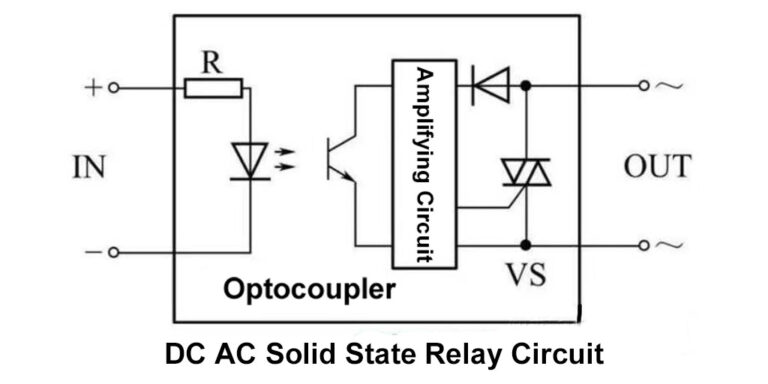
- AC AC SSR: this type of SSR control voltage is 70-280VAC, load voltage is still 24-480VAC. Its circuit diagram is as following:
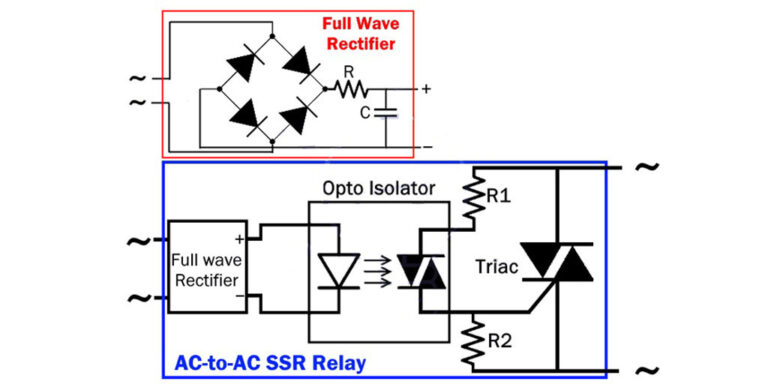
- DC DC SSR: this SSR is mainly designed for DC circuits, as the control voltage is 3-32VDC, load voltage is 24-220VDC
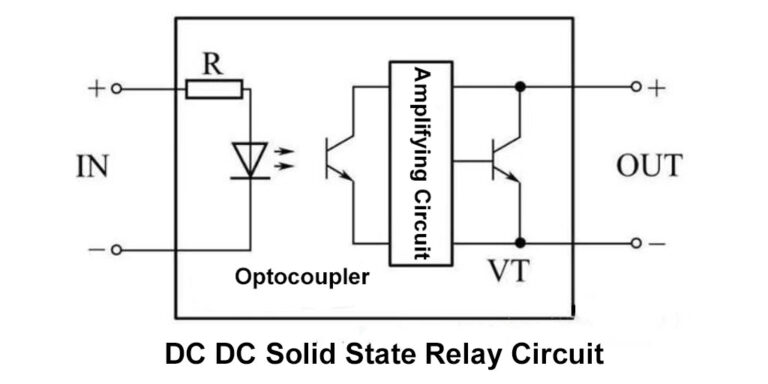
Advantages of Using SSRs
The solid state relay has 4 obvious advantages, there are no moving parts, longer lifespan and faster switching times, no noise. No moving parts makes us no need to worry about contact wearing out problems, so it ensures a SSR has a longer lifespan. Typically, we can use a SSR for at least 5 years. Another advantage is its faster switching time, the switching time is less than 1ms. And no moving parts bring the SSR; another advantage is no noise when running.
SSR applications
We can find many SSR applications no matter in industrial automation or home appliances. Industrial automation always uses the SSR as an execution controlled by a PLC device. Beside, the SSR can always be used with a pid temperature controller to control a heater temperature. Therefore, we can find SSRs in food and beverage machines, packing machines or powder coating machines, and so on.
Another application of the SSR is in home appliances, in some of the bread baking machines or coffee machines, there is common to see a SSR. In addition, we can use the SSR to turn on or off a lighting source.
How to Test a SSR?
We can test a SSR via two methods, one is using a multimeter for professionals, the other is using a bulb for unprofessionals.
Multimeter is necessary for an engineer or an electrician. By observing the SSR output voltage through the multimeter, we can clearly see whether the SSR is good or not. Applying the control signal, if the multimeter indicating the output voltage is zero, the SSR is broken, if the voltage is the same as the load voltage, the SSR is good.
If the multimeter is not available, we can find a bulb to test. Applying the control voltage, wire the bulb to the SSR load part. If the bulb lights on without problem, it shows the SSRs are good, or the SSR is already broken.
Reasons to Switch to SSRs
Reliability in harsh environments, energy efficiency and higher switching speed make the SSR a perfect product and solution in many specific applications.
FAQs
SSRs use semiconductor devices for switching, while electromagnetic relays use physical contacts.
The SSR main components are optocoupler, opto-triac. Optocoupler can transform electrical signal to light signal, opto-triac can utilize the light signal to turn on or off a load.
There are two methods, one is using a multimeter, the other method is using a bulb. Multimeter testing is for the professionals, bulb testing is much easier to find.
Compared with traditional relay, its cost is much more expensive and another important thing is the SSR should be used together with a heat radiator. And SSR will occupy much more space than intermediate relay.
There is no overload or short circuit protection in a SSR, to avoid the overload or short circuit problem, we can add a fast fuse to protect it. The fast fuse current should be 1.5 times more than the SSR output current.
Conclusion
The world of SSRs is ever-evolving. Now in the SSR manufacturing we can even see the dual outputs SSR, SSR with heat sink, PCB SSR, NO+NC SSR etc.. With advancements in technology, we can expect even more efficient and durable SSRs in the future.

